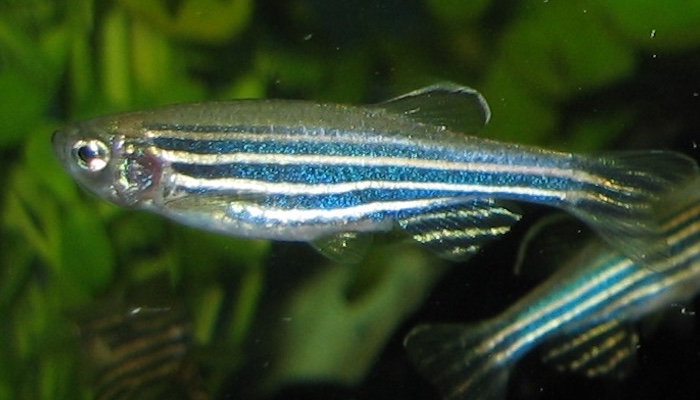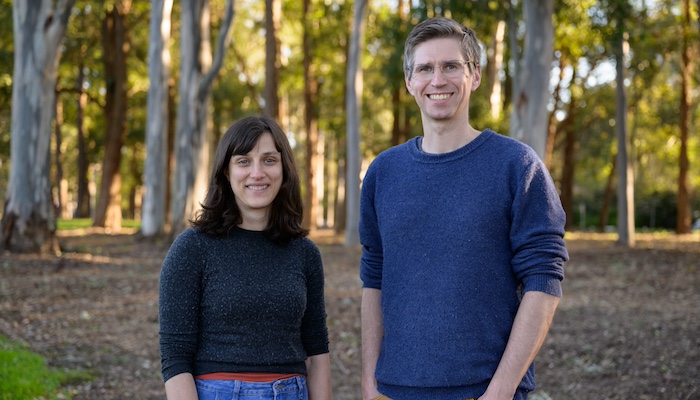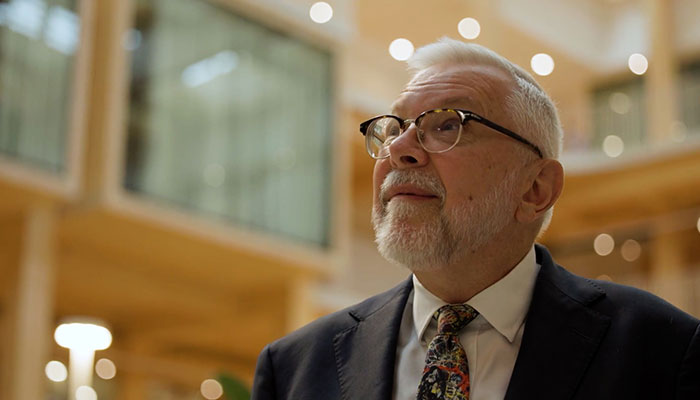Australian scientists have found an effective new way to clean up methylmercury, one of the world’s most dangerous pollutants, which often builds up in our food and environment because of industrial activities such as illegal gold mining and burning coal.

Pollution Pioneers: Laboratory zebrafish, pictured above, were engineered to break down toxic mercury in their bodies.
The discovery, published in Nature Communications, could lead to new ways of engineering animals to protect both wildlife and human health.
The research team from Macquarie University’s Applied BioSciences, CSIRO, Macquarie Medical School, and the ARC Centre of Excellence in Synthetic Biology, has successfully genetically modified fruit flies and zebrafish to transform methylmercury into a far less harmful gas that disperses in air.
“It still seems like magic to me that we can use synthetic biology to convert the most environmentally harmful form of mercury and evaporate it out of an animal,” says synthetic biologist Dr Kate Tepper from Macquarie University, lead author on the paper.
"Compared to other forms of mercury in the environment, methylmercury causes the most environmental harm due to its high bioavailability and poor excretion: it can easily cross the digestive tract, the blood-brain barrier, and the placenta,” she says.
Because of this, methylmercury builds up and becomes increasingly concentrated as it moves up through food webs – from small organisms to small fish to larger predatory fish – reaching its highest levels in top predator species.
Mercury accumulation
Species at the top of food webs, including humans, can gradually accumulate mercury at levels that cause harm to neural and reproductive health.
“Until now, we haven't been able to access methylmercury once it enters food webs using current bioremediation methods. Our approach uniquely addresses this accumulated methylmercury,” says Dr Tepper.
“Releasing engineered animals that are near the bottom of food webs could help protect many other animals in the ecosystem.
“Examples include humans, who can suffer neurological impairment, and endangered migratory birds, who reproduce less and can’t fly as far when exposed to diets high in methylmercury.”
Dr Tepper says that the research has another potential application, engineering insects that industrially process organic waste.
“The insects could process organic waste commonly contaminated with methylmercury and in the enclosed facilities, the mercury gas they emit could be captured and removed from the biosphere,” says Dr Tepper.
Equipping animals with microbial capabilities
The team modified the DNA of fruit flies and zebrafish by inserting variants of genes from bacteria to make two enzymes that together, can convert methylmercury to elemental mercury which evaporates from the animals as a gas.

Reducing harm: Dr Kate Tepper, pictured left, and Associate Professor Maciej Maselko, pictured right, have designed a way to clean up one of the world's most dangerous pollutants, methylmercury.
“When we tested the modified animals, we found that not only did they have less than half as much mercury in their bodies, but the majority of the mercury was in a much less bioavailable form than methylmercury.
“This means they could be exposed to higher levels of methylmercury than non-engineered animals without showing a toxic effect,” says Dr Tepper.
We believe this is a very promising approach to reduce the harm of mercury pollution in impacted ecosystems to the benefit of humans and many other animals.
The study also shows the advantages of using genetically modified animals to combat pollution.
“Animals have sophisticated digestive systems, high metabolic activity, and relative ease of containment.
“This makes them potentially a much better option for decontaminating polluted locations than engineered microbes and plants, which have been the primary focus for bioremediation research,” says Associate Professor Maselko.
Safety first
“The research is still in the early stages, and extensive testing is needed to make sure it’s effective and completely safe,” says Associate Professor Maselko.
The researchers discussed safety measures to stop the modified organisms spreading uncontrollably in nature, and they also highlighted the need for regulatory control for any real-world use.
“Ultimately, we believe this is a very promising approach to reduce the harm of mercury pollution in impacted ecosystems to the benefit of humans and many other animals,” Associate Professor Maselko says.
The International Technology Center-Pacific and CSIRO Environment provided funding for this research.
Quick facts about mercury:
- Mercury pollution is a worldwide problem that can damage brain development, especially in children
- People are mainly exposed to mercury by eating contaminated seafood
- Current clean-up methods can’t remove mercury once it builds up in animals
- The clean-up genes came from bacteria that naturally break down and evaporate mercury
- Any real-world use would require extensive safety testing and government approval
Maciej Maselko is an Associate Professor in Applied BioSciences in the Faculty of Science and Engineering at Macquarie University.
Dr Kate Tepper is a Postdoctoral Research Fellow in the Macquarie University Department of Applied BioSciences.



